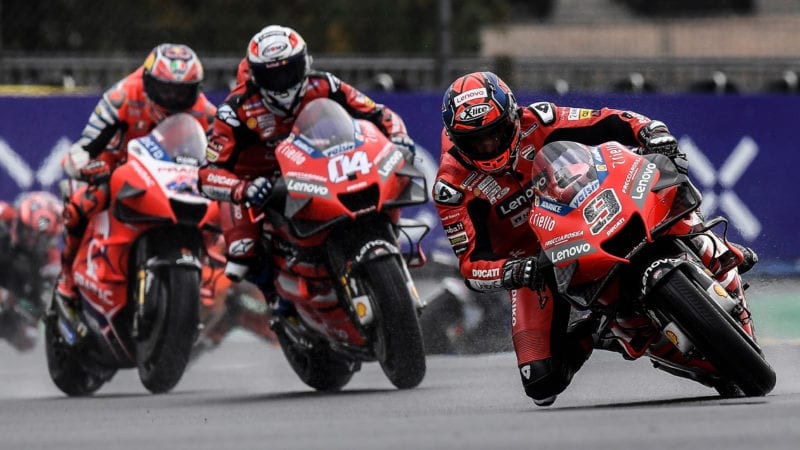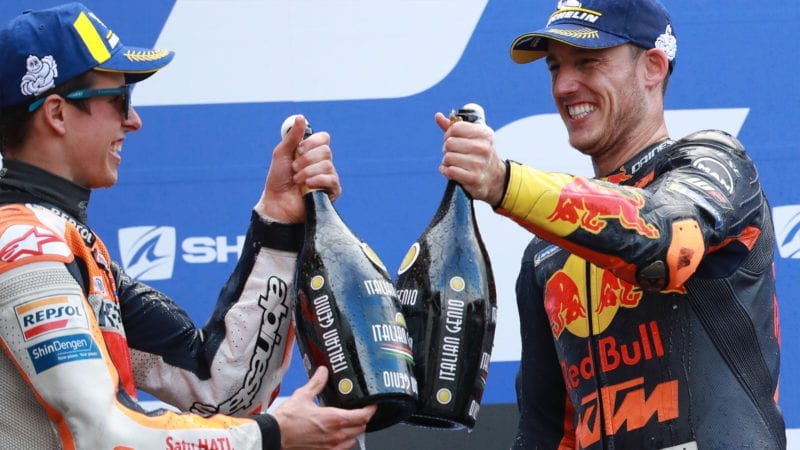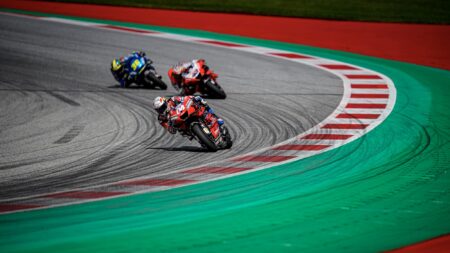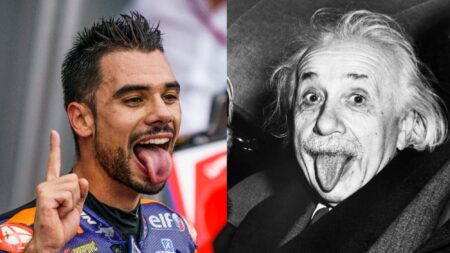Alex Márquez’s ride to second was a miracle and a big fingers-up to the doubters. A wet podium isn’t a dry podium, but it’s still a podium and a step in the right direction. Márquez sensibly started the race with a well-scrubbed front tyre, which probably helped his lap-one charge from 18th to tenth.
This was the first time the young Spaniard had raced a MotoGP bike in the wet and during the mid-stages he was the fastest rider on track. This brought back memories of his older brother, who also raced a MotoGP bike for the first time in the rain at Le Mans, back in 2013. It took Márquez the elder just eight laps to be faster than all his rivals.
“Now we just need to make this result in the dry,” said Márquez, fully aware that a first dry-weather podium isn’t just around the corner.
Petrucci and Márquez weren’t the only riders who were happy with the rain, which caught everyone by surprise because most forecasts had predicted a dry race.
KTM has made a huge breakthrough this year, scoring its first two MotoGP victories in August. The 2020 RC16’s biggest advantage is its front end, which gives excellent braking and entering performance. Inevitably this demands a lot from the front tyre, so KTM riders usually need a harder front compound than their rivals.
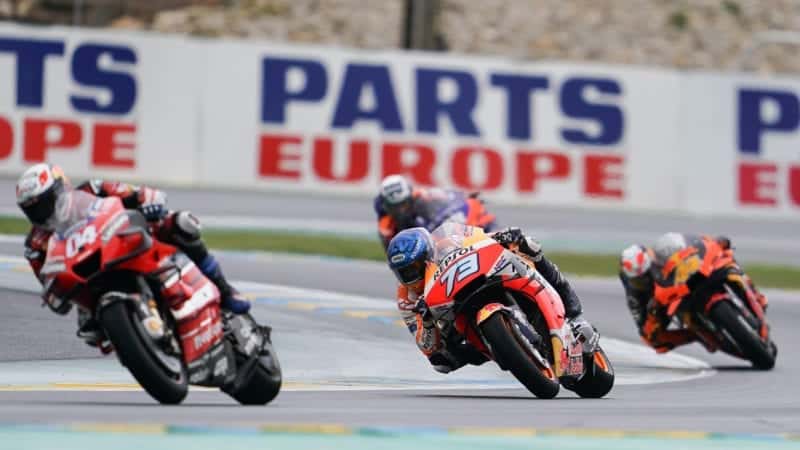
V4s to the fore: Dovizioso, Márquez, Espargaró and Miguel Oliveira
Honda
This was a major problem at Le Mans because the track was so damned cold. During practice and qualifying Pol Espargaró and his fellow RC16 riders wanted to use Michelin’s medium front slick – for better support on the brakes – but if they used the medium compound they knew they risked a crash because the tyre wouldn’t get up to temperature, especially on its left side, for the track’s fewer left-handers.
“I was thinking of trying the medium front in FP4, but I didn’t want to risk that much,” said Espargaró.
So all four KTM men fitted soft front slicks for Sunday afternoon, which would surely have given them difficulties if the race had been dry.
“It was a borderline decision between the medium and the soft front slick for us,” said Espargaró’s crew chief Paul Trevathan. “But with the temperature at only 16 or 17 degrees we just didn’t want to take the chance with the medium, even though the soft stopped us from using the strong points of our bike.”
Trevathan agreed that the V4s had the advantage on Sunday.
“When the track is like that it’s safer to brake late and upright, stop the bike and squirt it out again,” he added. “If you need to carry corner speed to go fast it wouldn’t have been so nice out there.”
The fastest inline-four rider on Sunday was Suzuki’s Álex Rins, who charged through from another lowly grid position to pass Espargaró and then take off after the leading trio of Ducatis: Petrucci, Andrea Dovizioso and the luckless Jack Miller.
One of the secrets to the Spaniard’s speed was his choice of the medium front. This gave him enough stability in straight-line braking to catch the Ducatis at quite a rate, but once he was in amongst them, they were harder to deal with. Finally he got the better of Miller and then audaciously snatched second place from Andrea Dovizioso, while the Italian was trying to snatch the lead from team-mate Petrucci.

